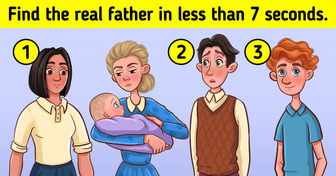17 Things Whose Purpose Is Beyond Understanding, Even at Second Glance


The lives of celebrities of the Golden Age of Hollywood only seem perfect. Behind the glamour, there’s a harsh truth about the difficult conditions of the contracts the actors had to follow to be successful. Studio bosses often had full power over the stars, leaving them no choice. This was the price of the actors’ fame.
We at Bright Side have found out what requirements there were for the stars of old Hollywood. And many of them would cause a huge scandal if they existed today.
After signing a multi-year contract with a studio, movie stars didn’t belong to themselves anymore. Hollywood bosses decided what films and what roles the actors would get. More than that, studios often borrowed actors from each other for movies. And the more famous the name of the star was, the more expensive the “rent” was.
After the success of Hell’s Angels, Howard Hughes gave Jean Harlow to other studios. Columbia Pictures borrowed Clark Gable from Metro-Goldwyn-Mayer (MGM). Also, MGM rented out Lana Turner, Joan Crawford, Elizabeth Taylor, Hedy Lamarr, and other rather famous actors and actresses.
The rising stars of old Hollywood often stopped using their real names, but not because they wanted to. Marilyn Monroe, Natalie Wood — these are the names that actresses became famous with worldwide. And Carole Lombard (born Jane Alice Peters) had to change her first and last name due to her contract conditions.
Another famous actress was even less lucky. The studio boss thought that the real name of Joan Crawford sounded like “sewer.” The company even conducted a vote to choose a stage name for her. The actress hated her new name for the rest of her life, but admitted that she felt safer with it.
In old Hollywood, actors were often told to change facts about their past. The stars had to go against their own nature and character, and they didn’t always like it.
Joan Crawford grew in quite a problematic family, but thanks to MGM, she became the daughter of typical rich Americans. It was as if she’d gotten tired of the rich life and run away to Hollywood. Rita Hayworth often admitted she was the exact opposite of the character she had to portray. Cary Grant said about himself, “Everyone wants to be Cary Grant—even I want to be Cary Grant.”
Studio bosses weren’t very kind to actors and actresses. And it seems that they made some stars feel insecure on purpose. The head of MGM called Judy Garland “little hunchback.” The young actress didn’t fit in with the glamour image of the time and was very shy about her appearance.
Even when she turned into a beautiful young woman, Judy still had the “girl next door” image. She wore special rubber discs to correct the shape of her nose and accessories on her teeth. Later, a studio makeup artist helped her get rid of all this, but her self-esteem didn’t get much better.
It was very different with actresses that were obviously very attractive. Studio bosses tried to attract as much attention to their body parts as possible. So, Betty Grable, was famous for her perfect legs that 20th Century Fox insured for a huge sum of money just for PR purposes. The entire world talked only about Betty’s legs.
Hedy Lamarr was also partially a hostage of her own appearance. The head of MGM was promoting her as the most beautiful woman in the world. He had high hopes because of how attractive she was. Of course, she only portrayed exotic characters that wanted to seduce men.
Movie companies often used fake relationships between actors to attract viewers’ attention to movies. For example, Mickey Rooney and Judy Garland supported the illusion of a romance in public because the fans loved the “chemistry” between them. Judy really fell in love with Mickey, but Rooney said that they were connected by a feeling more than love.
Elizabeth Taylor said that the movie studio controlled all aspects of her life, and this was especially true for her relationships. The MGM bosses organized a meeting between 16-year-old Elizabeth and football player Glenn Davis. They were engaged for one month, but the wedding never happened.
When the actress was 18, she was going to marry Conrad Nicholson Hilton, and MGM decided to organize the wedding to use it as a media event. The marriage didn’t last long, but it was a good promotion for the movie Father of the Bride, which Taylor was in.
The movie studios made sure that personal relationships didn’t affect the image of the stars. When Mickey Rooney said he wanted to marry Ava Gardner, the MGM boss spoke against this marriage. But later, the actors still had a small celebration.
Judy Garland also disobeyed her bosses and married musician David Rose, even though the studio was against it. For this, the bosses told her to get back to the set within 24 hours after the wedding, depriving the newlyweds of their honeymoon.
Columbia Pictures was making a contract with Marilyn Monroe, and they based her appearance on Rita Hayworth. A starlet that had chestnut hair became a platinum blonde because the studio said so. Besides, she also had to undergo the procedure of hairline electrolysis to change her hairline.
Even children couldn’t avoid appearance requirements. For example, MGM made 12-year-old Elizabeth Taylor wear braces and got her to remove 2 baby teeth. The studio also wanted to dye her hair, change the shape of her eyebrows, and name her Virginia, but her parents, and Elizabeth herself, were strongly against that.
Do you think you could meet these requirements just to be world-famous? Which of these things seem the most outrageous to you?











